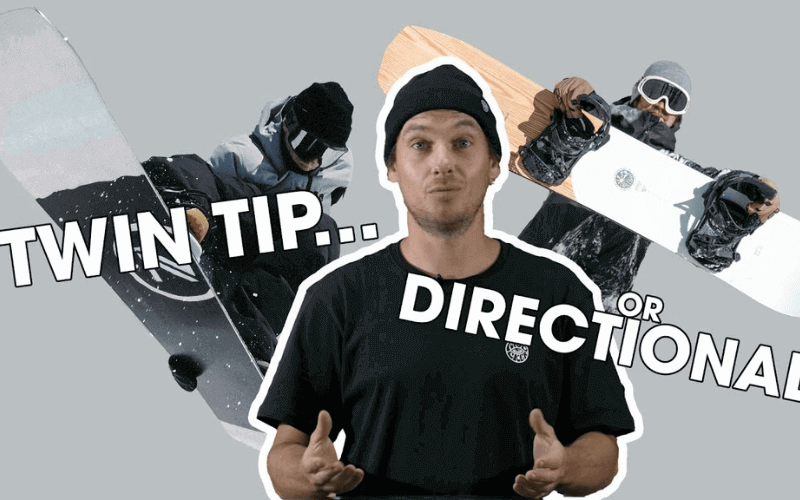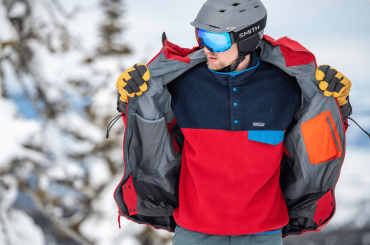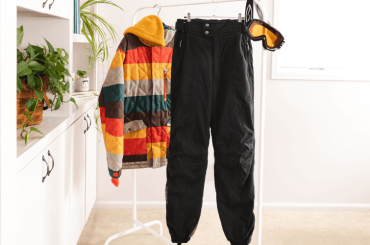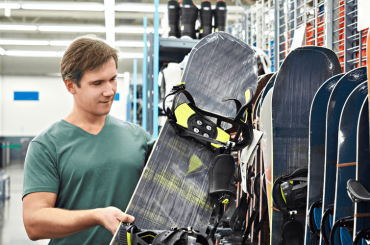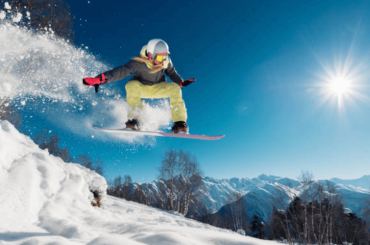There is a lot of terminology in the snowboarding world that can be confusing for beginners. One such term is directional snowboard. So what exactly is a directional snowboard? And why should you care?
In this post, we will take a closer look at directional snowboards and explore some of the benefits they offer over other types of boards. Stay tuned!
What Is Directional Twin Snowboard?
A directional twin snowboard is a board that is designed for riding primarily in one direction. The nose (front) of the board is usually longer than the tail (back) and the board may also have a different flex pattern.
Directional twins are typically used by riders who want to do more carving and downhill riding as opposed to freestyle riding.
Benefits of Directional Twin Board
There are several benefits to riding a directional twin board.
- First, the longer nose provides better stability and tracking when going fast.
- Second, the different flex pattern gives the board more pop for jumping and better carving ability.
- Third, the directional twin is a versatile board that can be used for a variety of different riding styles.
- Fourth, the board is best suited for intermediate to advanced riders who want to do more carving and downhill riding.
So if you’re looking for a versatile board that can perform well in a variety of conditions, a directional twin snowboard is a good option to consider.
How does it differ from other types of boards?
As we mentioned, the biggest difference between a directional twin and other types of boards is the nose. With a directional twin, the nose is longer than the tail which gives the board better stability and tracking when going fast.
The other main difference is the flex pattern. A directional twin will usually have a stiffer flex in the nose and a softer flex in the tail. This gives the board more pop for jumping and better carving ability.
Who is best candidate for a directional twin board?
Directional twin boards are best suited for intermediate to advanced riders who want to do more carving and downhill riding. If you’re a beginner, you may find a directional twin board to be too much board for you.
And if you’re primarily interested in freestyle riding, a directional twin is probably not the right board for you. For freestyle riding, you’re better off with a true twin board.
Relevant Topic: How To Stop Heel Lift In Snowboard Boots?
How to ride a directional twin board?
If you’re new to snowboarding, or if you’re not familiar with the directional twin, it’s important to know how to ride this type of board.
- First, because the nose is longer than the tail, you will want to put more weight on your front foot when riding a directional twin. This will help to keep the nose of the board down and will give you better stability.
- Second, the different flex pattern means that the board will respond differently when you turn. So when carving, you will want to make sure that you’re Initiating your turns from your front foot.
- And finally, because the directional twin is a versatile board, it can be ridden in a variety of different ways. So experiment and find the riding style that best suits you.
Directional twin boards are a great option for intermediate to advanced riders who want a versatile board that can perform well in a variety of conditions.
Where can you find them for sale?
Directional twin boards are widely available and can be found for sale at most snowboard shops.
You can also find a great selection of directional twin boards online. When shopping for a board, it’s important to keep in mind your skill level, riding style and the type of terrain you’ll be riding on.
With so many different boards to choose from, it can be tough to know which one is right for you. But if you keep these things in mind, you’ll be sure to find the perfect board for your needs.
Also Read: How Fast Can Snowboarders Go?
FAQs – directional snowboards
What’s a directional twin snowboard?
A directional twin snowboard is a board that has a longer nose than a tail and a different flex pattern. The nose is usually stiffer than the tail, giving the board more pop for jumping and better carving ability.
Can you ride switch on a directional snowboard?
Yes, you can. In fact, many riders prefer to ride switch on directional boards because it allows them to get a more versatile experience out of their board.
Switch riding also helps improve your balance and coordination while snowboarding. Additionally, it can make certain tricks and turns easier to execute.
What’s the best size directional snowboard for me?
The best size directional snowboard for you will depend on your height, weight and riding style. If you’re a beginner, it’s best to go with a shorter board.
As you become more advanced, you may want to move up to a longer board.
Wrap Up
Directional snowboards are the perfect choice for riders who want to improve their skills on powder and steep slopes. With a directional shape, these boards provide stability and control when you need them most.
If you’re looking for a board that will help take your riding to the next level, consider investing in a directional snowboard this season.

